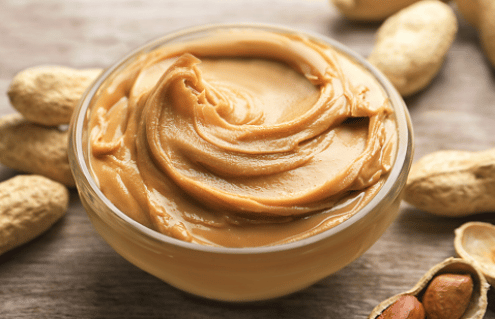Can you eat peanut butter in diabetes? Is it safe? Does it have any ill effects? These are some questions that often come in your mind if you are recently diagnosed with diabetes and love to sit with a jar full of peanut butter, anytime. In this blog, we will try to enlighten you with some information about peanut butter in relation to diabetes.
Diabetes is one of the most common diseases affecting a lot of people in the United States. Over here, the number of people with type 2 is 29 million. The other 84 million individuals have prediabetes and thus have elevated but not high enough blood sugar (or glucose) to induce diabetes.
Irrespective of age, this is diagnosed in most people. Type 2 diabetes is a chronic condition that prohibits the use of insulin in your liver. Middle-aged adults or older people are more likely to have diabetes of this sort because it was once known as adult diabetes. However, type 2 diabetes also impacts children and youth, mostly due to obesity in children.
Post to diagnosis of Diabetes, the patients have to maintain a lot of restrictions to stay healthy. Does peanut butter fall in this area of restriction? Continue reading to know.
Peanut Butter and Diabetes
Peanut butter may allow people to regulate diabetes, which has an impact on the levels of blood sugar. How does this famous snack better handle this condition exactly?
Peanuts have a wide range of dietary properties that can support persons with type 2 diabetes. Peanuts and peanut may help to eat:
- Encourage loss of weight
- Reduce the risk of heart disease
- Blood sugar control control
- Prevent people from diabetes first and foremost
Peanuts carry certain potential risks, however. Learn more about the dangers and benefits of eating peanuts if you have type 2 diabetes.
Benefits of Peanut Butter in Diabetes
It can be helpful to add peanuts and peanut butter to your diet, particularly if you have type 2 diabetes. Peanuts provide much of the same health advantages as tree nuts, like walnuts, amber, and pecans, although they are not actually a nut. Peanuts are also less costly than many other nuts, which is perfect if you want the nutritious rewards to save money.
Blood Sugar Control
When you have diabetes, the glycemic content of the foods you consume must be considered. The content of glycemic is focused on how readily your body transforms glucose or blood sugar into carbohydrates. A 100-point Glycemic Index (GI) measures foods on how easily blood sugar rises. A higher importance is assigned to foods that induce a rapid increase in blood sugar. Water has a GI value of 0, which is without effects on blood sugar. Peanuts are GI 13, making them a low GI snack.
Magnesium
Peanuts are sources of plenty of magnesium. People with type 2 diabetes have reduced levels of magnesium.
Researchers have indicated that additional magnesium, especially with fiber, may provide type 2 diabetes safety by:
- Enhance immunity to insulin
- Oxidative stress relief
- to stop systemic inflammation
- Peanuts and butter will provide magnesium to your diet.
Nutrition Level
Everybody can benefit from nutrient-rich foods: peanut butter supplies protein and a number of minerals and vitamins.
Two tablespoons of peanut butter in salt style (32 grams (g) have been produced:
- 188 calories
- 7 g protein
- Carbs: 6.9 g of sugar (2.6 g) or fiber (2.7 g) used
- Fat 7.4 g unsaturated
- Fat: 2.4 g Saturated Fat
- Fat 4.5 g monosaturated
- Fer: 0.6 mg iron
- 14 milligrams (mg) of calcium.
- 102 mg phosphate
- 51 mg of magnesium
- 156 mg of sodium
- 238 mg of potassium
- 9 mg of zinc
There are contents of B-vitamins, in particular niacin and folate, vitamin E, and vitamin K. The nutritional content depends on the peanut butter form and brand.
What Does Research Say?
The research revealed that, after consuming peanut butter or peanuts at breakfasts, women with obesity have a chance to develop type 2 diabetes that can control their blood sugar all day long. Since consuming a high-carbohydrate meal, the researchers focused on the positive effects of cacti.
Research participants who ate breakfast peanuts:
- Blood glucose levels have lowered
- No hunger experienced
- Eaten fewer calories all day long
In contrast with the control group, hormone levels called GLP-1 were also higher among people who consumed peanuts. GLP-1 increases the development of insulin, reduces insulin tolerance, and reduces appetite. For people with diabetes, the role of GLP-1 is significant. Some medications seek to imitate this hormone. However, while women were at risk of contracting diabetes in this study, they were not affected. The research doesn’t yet offer a full analysis of how peanut butter could support people suffering from diabetes for breakfast. There were also only 15 participants in the sample. In a wider analysis, scientists must repeat the findings to prove their weakness.
Considerations
Peanut butter may be an excellent component to control diabetes. However, certain dangers can occur.
Extra Sugar: Many peanut butter purchased in the market produce extra sugar. Diabetes individuals should look at the package and choose all-natural peanut butter. Fatty type of peanut can also contain more sugar than other varieties.
Calories: Peanuts are high in calories. It is a risk factor for diabetes and diabetes to intensify. Eating too much will lead to obesity. Peanut butter should be consumed mildly, and calories should be taken into account in serving. There are about 188 calories in a tablespoon of peanut butter.
Fatty Acid: Fatty peanuts contain moderately high omega-6 levels. Omega-3 fatty acids help to decrease inflammation, but they can be raised by having a higher omega-6 ratio. According to a report, the high intake of omega 6 can induce imbalances in the fatty acid ratio and raise the chances of obesity and insulin resistance. Diabetes is an inflammatory disease. To control and decrease the risk of obesity and diabetes complications, the equilibrium between omega 6 and omega 3 is necessary.
Allergies: Any people are allergic to peanuts. This can be grave and life-threatening. People with or suspected of being allergic to peanuts should contact a specialist before eating peanuts or associated products.
Having peanut Butter as a Delicious Snack
Here are a few perfect ways to add peanuts and butter to your diet:
- Mixed in a glass of whole grain oats in the morning
- Use it as lunch, spreading it on a sandwich.
- A pinch of a snack in the evening helps to control the snack craving.
- Mixed with a little coconut milk as a grilled chicken breast sauce
- With crackers as a snack at night
Try one of these today and get delicious meals in diabetes as well.
Doctor’s Recommendation
Peanuts can be good for people with diabetes but also have risks. They can cause serious allergies, and store-bought peanuts often have a lot of salt, fat, sugar, and additives. It’s important to watch your calorie and carb intake because peanuts are high in both. Peanuts can also have aflatoxin mold, which is bad for people with liver problems. Choosing whole peanuts instead of processed ones like powdered peanut butter is better for nutrition.
—Disclaimer: Please note that the contents of this community article are strictly for informational purposes and should not be considered as medical advice. This article, and other community articles, are not written or reviewed for medical validity by Canadian Insulin or its staff. All views and opinions expressed by the contributing authors are not endorsed by Canadian Insulin. Always consult a medical professional for medical advice, diagnosis, and treatment.



